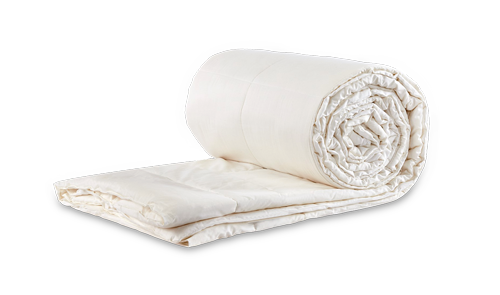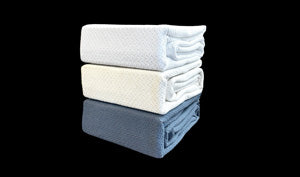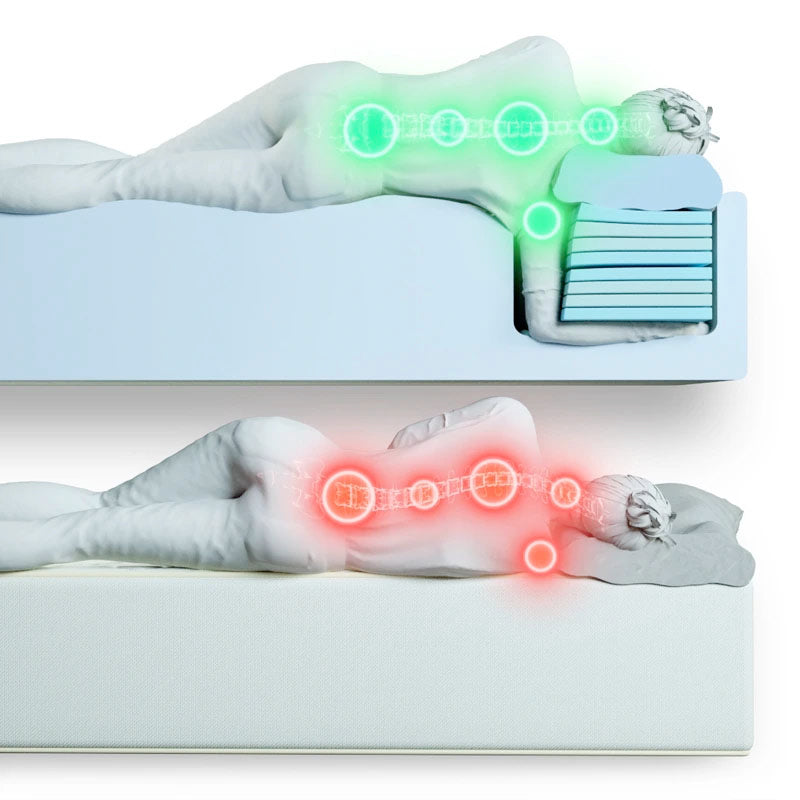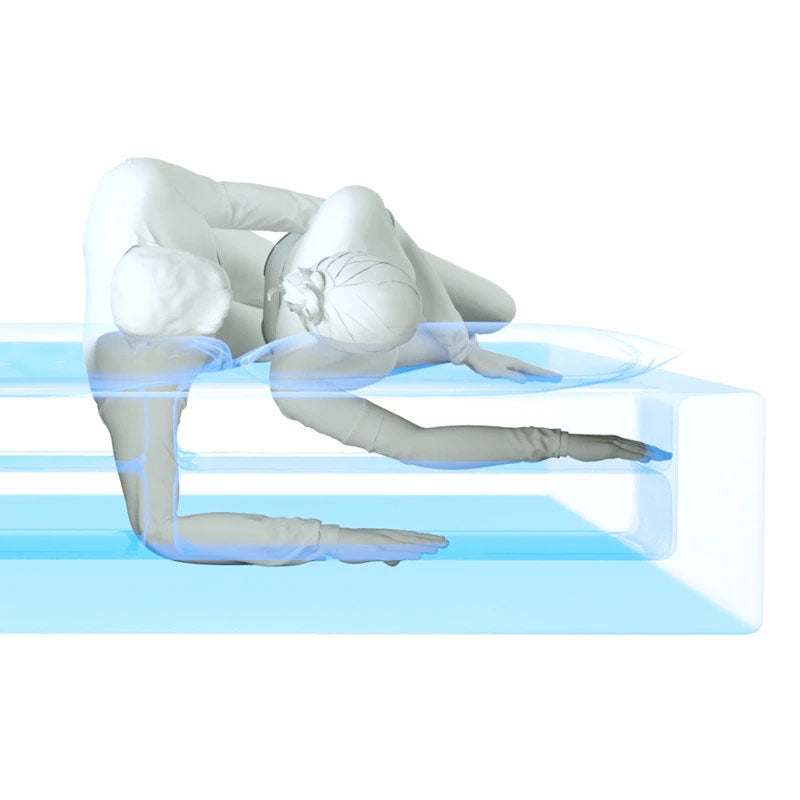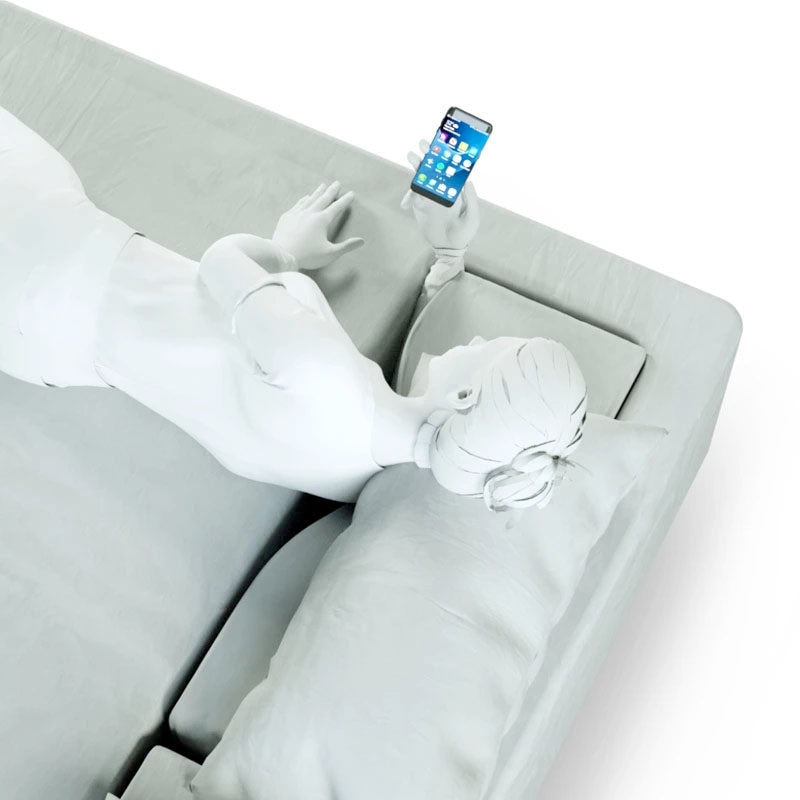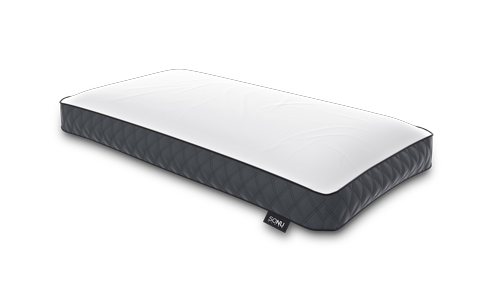Imagine: you’ve been sleeping for a few hours when you are suddenly awakened by a sharp pain in your knee. Does this sound like you? Do you happen to be a side sleeper?
We get it. Knee pain is annoying. That sharp pain you feel is usually indicative of another issue.
If you experience knee pain when sleeping on your side, there are a number of things you can do to help ease the pain. One of those things is upgrading to the SONU Sleep System, the world’s first mattress designed specifically for side sleepers.
In this article, we will review what causes knee pain, ways to treat and prevent it, and how the SONU Sleep System can help you get the best night of sleep.
What Are Common Causes of Knee Pain?
Approximately 50% to 90% of people who experience chronic pain have trouble sleeping.
Not having enough sleep is negative for your health. The sleep-deprived put themselves at risk for knee injuries due to their inability to function normally. It makes them more accident-prone.
Not all knee pain comes from physical activities. Age and weather are additional factors that can cause your knees to hurt.
These are some of the most common causes of knee pain.
Bursitis
When the bursae in your knees become inflamed, it is called bursitis. Bursae are fluid-filled sacs that cushion your knee joint so your ligaments and tendons can move over it smoothly.
Tendinitis
Tendinitis occurs when your tendons become irritated or inflamed. Tendons are fibrous tissues that connect your muscles to your bones. Tendinitis is common among athletes that participate in sports that include a lot of jumping and bending the knees, like track and field, cycling, and skiing.
Dislocated Kneecap(s)
A dislocation occurs when your patella slips out of its place. You can usually see that the knee is out of place with your naked eye. To fix it, a medical professional will have to slide your patella back in place, which can be a very painful experience.
Osteoarthritis
Osteoarthritis is also called degenerative arthritis because your knee cartilage wears down over time. This can happen if you do activities that involve a lot of bending of the knees or simply because you are aging.
Torn ACL
Torn anterior cruciate ligaments (ACLs) occur when one or more of your ligaments tear between your shinbone and thighbone. ACL injuries are very common in contact sports like football, basketball, and soccer. Having to frequently pivot when playing is what causes the tears.
Meniscal Tear
The meniscus absorbs shock between the shin and thigh bones. Applying too much weight to this cartilage can cause it to twist and tear.
Fracture
A fracture occurs when you break the bones in your kneecap. This usually happens in athletes and older people when they fall down. Older people, in particular, often experience fractures if they have osteoporosis. Many people in car accidents also suffer from fractures if the impact of the collision involves the knees.
Gout
Gout happens when uric acid builds up in your joints. It is a type of arthritis that is characterized by swelling. Some people experience gout in their feet, but knees, blood vessels, and organs like the kidneys or gallbladders are also susceptible to gout.
Rheumatoid Arthritis
This is the most common form of arthritis. It is an autoimmune disease that can impact any of your joints, including your fingers, shoulders, knees, and toes.
Why Does It Hurt At Night?
If you can’t sleep due to pain, then you are suffering from painsomnia. Yes, this is a real condition. People with pain in their joints suffer from it the most, especially if they have arthritis.
So why do your knees hurt at night? It’s because your cortisol levels are reduced when you go to sleep. Cortisol is necessary for controlling inflammation. When you lie down, inflammation can flare up in your knees, making them stiff and painful.
What Are Treatment Options for Knee Pain?
If you’ve been suffering from knee pain for a while, you’ve probably come up with some vices for dealing with it.
If your knee pain flares up when you sleep on your side, you may need to invest in a better, more comfortable mattress — like the SONU Sleep System.
Here are just a few things you can do to help mitigate your discomfort.
Adjust How You Sleep
Even though sleeping on your side is the most popular position, people who sleep in that position often complain about the discomfort they feel. This is usually due to their mattress and pillows. If you have knee pain, sleeping on an uncomfortable mattress will make your pain much worse.
That’s why SONU Sleep came up with a mattress and adjustable pillows for side sleepers that help mitigate their pain.
Not only can you immerse your shoulders into the Comfort Channel that every SONU mattress comes with, but you can adjust your pillows and place one of them between your knees to make them more comfortable. Experts often suggest placing a pillow between your knees if you experience any pain in your lower extremities.
Adjustable beds are good for people with knee pain. They can elevate their knees when they sleep by raising up the lower half of the bed. If this isn’t an option, place a wedge pillow under your knees to keep them raised while you sleep. This is also good for keeping pressure off your hips.
Sleep Cool
Heat is usually recommended for pain, but cold therapy is also popular. Athletes are famous for their ice therapy sessions that help reduce inflammation in their joints after they’ve played a rigorous game.
We aren’t suggesting that you take an ice bath at bedtime (although, you could include that recovery plan). When it comes to falling and staying asleep, cooler temperatures are usually better for knee pain sufferers. People who sleep in cooler temperatures or on beds that sleep cool do not wake up as much throughout the night as people who sleep warm or hot.
Use a Heating Pad
On the flip side, if you are someone who responds best to heat therapy, you don’t have to crank up your thermostat to treat your knee pain. There are a variety of heating pads on the market now from the small ones that most people are familiar with to mattress pads to heated blankets. Heat usually loosens up stiff joints, which will combat the loss of cortisol we experience when we sleep.
Use Compression Garments
Compression garments are good for stabilizing your joints, preventing swelling, and reducing pain. There are plenty of compression knee braces available now. You can even pick them up at your local pharmacy.
How Can I Get a Better Night of Sleep?
Using any of the suggestions above will help you sleep better while experiencing knee pain. In addition to these suggestions, there are other changes you can make that will equip you for better sleep.
Talk to your doctor about medicinal options for your pain. They can point you to over-the-counter (OTC) pain medication or prescribe you something stronger. There are some ointments that you can rub on your knees that help minimize inflammation and pain.
Another option is asking about sleep supplements. You could try something natural, like tea. Or your doctor might recommend melatonin. If your pain is severe, they may prescribe you a combination sleeping pill and painkiller.
The SONU Sleep System is another way you can enjoy a better night of sleep. The SONU mattress was made with side sleepers in mind, and it offers sink-in support that helps keep your spine aligned and prevents uncomfortable pain and pressure on the body while you rest. With a plush layer of serene foam, cooling technology, and the patented Comfort Channel, the SONU can help you get the best sleep of your life.
How Can I Prevent Knee Pain in the First Place?
Accidents, like torn ACLs and fractures, happen. But, there are ways to help prevent knee injuries that you can include in your lifestyle.
Manage Your Weight
How much we weigh has an effect on our knees. Keeping yourself at a safe, healthy weight is part of how you prevent knee injuries and pain. If you are overweight, you could be increasing the amount of strain on your knees, which could lead to unnecessary pain.
Stretch
Keep your knees flexible by doing regular stretching exercises. Stretches that involve your shins, thighs, and hamstrings will be the most impactful. You could even start doing yoga to help make your joints more limber and improve your balance.
Exercise Carefully
That being said, when you do exercise, do it as safely as possible. Don’t rush through your routine. If you experience frequent knee pain, consider doing workouts that are easy on your knees like yoga, as we mentioned, and swimming.
If weight lifting is part of your routine, do not attempt more weight than is recommended, and do not push yourself too hard to complete reps.
Practice
If you participate in sports or other activities that involve heavy use of your knees, practice exercising caution when doing those activities. Consult an expert to find out if there are knee-safe alternatives to some common moves. Always exercise patience and allow yourself some grace as you practice.
Conclusion
A lot of people who suffer chronic knee pain find themselves needing further relief when they sleep in the side position or other positions. The first step to relief is being aware of common knee injuries, knowing how to treat those injuries, and learning how to prevent them in the future.
If you are a side sleeper experiencing knee pain, SONU Sleep is here to help. The innovative SONU Sleep System includes a negative space mattress with an immersive Comfort Channel with adjustable Support Pillows.
You can test out the SONU Sleep System with the 100 Night Trial offer. If you decide SONU’s product is not for you, you can return it for a refund.
You deserve pain-free, luxurious sleep. Contact SONU Sleep today and let their revolutionary sleep system help you sleep like never before.
Sources
How To Keep Sore Joints From Ruining Your Sleep | Cleveland Clinic
How to Sleep Better with Arthritis: Tips from Patients | Creakyjoints.org
Knee pain - Symptoms and causes | Mayo Clinic
Comorbid Conditions and Gout | Arthritis Foundation













